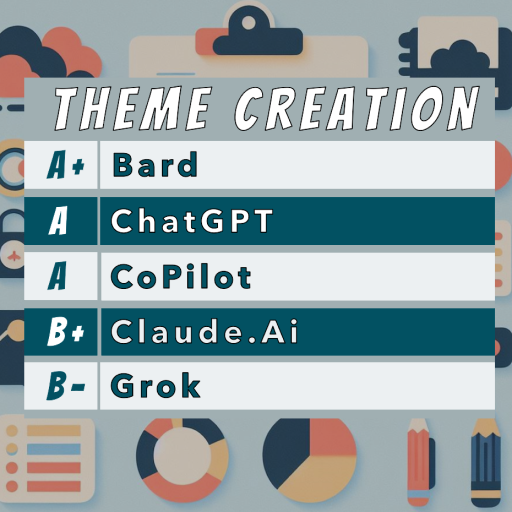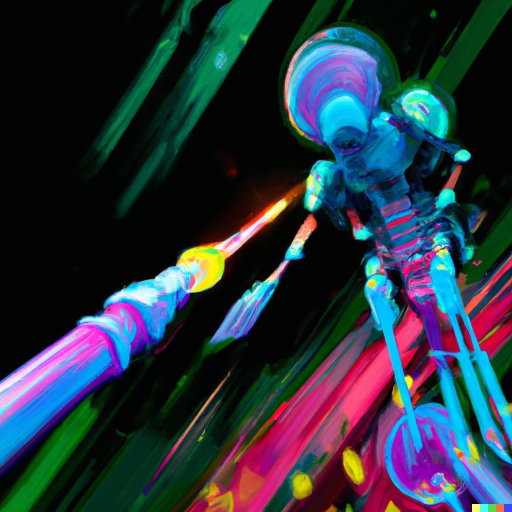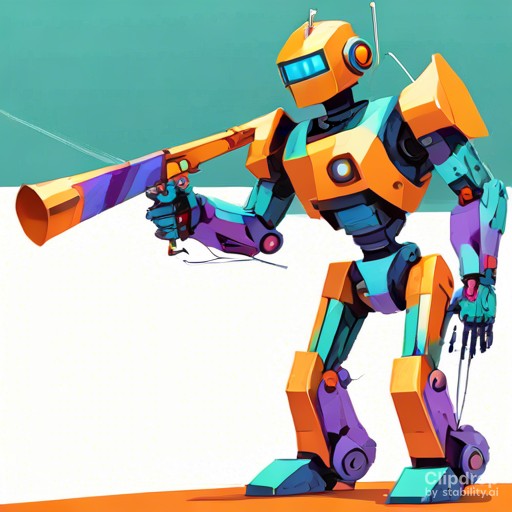Project: Maestro - Substack Newsletter - Logo
Using AI to design and develop a consumer application
I wanted to generate a square logo that I could use to identify the project and I needed something that both captured the intention of the project but would also be iconic when scaled down.
I started the following request prompt:
Give me ideas for a brand logo for a Substack newsletter about using
AI to design and develop a consumer application.
Strategy
Stack multiple AI technologies in three phases:
- Theme Creation - Brainstorm themes using large language models
- Prompt Optimization - Use LLM to build efficient text-to-image prompts
- Image Generation - Create images using generative models
Theme Creation
Very similar answers and recurring themes. Convergence on color palette and font selection. References to robots, interconnected networks, circuitry. Sleek lines and edges, abstract forms

Where did they succeed?
- Explaining how the model arrived at its solution
- Offering thematic suggestions
Where did they fail?
- Very few new ideas, even on max creativity settings
- Note: Asking to modify or remix ideas mitigates this “groupthink”
- Conversational responses made the next step, prompt generation, more time consuming.
AI Tool Report Card

Notes
- Bard (A+) - Several options, summarize bullet points, additional tips
- ChatGPT (A) - Summarized bullet points
- CoPilot (A) - Summarized bullet points, logo style suggestions
- Claude.Ai (B+) - Brief bullet points
- Grok (B-) - Basic and terse but different options
Prompt Optimization
Generally OK at prompt optimization. Can target different image generation models if they are aware of them
PROMPT:
In less than 77 tokens, describe a stable diffusion prompt for...
Where did they succeed?
- Prompts were consistent
- Able to constrain total token count
Where did they fail?
- Generated prompts weren’t that much better than what someone with a little prompt engineering experience could create
- Tends to favor the DALL-E prompt format, Stable Diffusion not as much
AI Tool Report Card

Notes
- CoPilot (A+) - Generated the (winning) image immediately
- Bard (A-) - Good but embellished prompt with useless tokens
- ChatGPT (A) - Brief but capture intention of design
- Claude.Ai (B+) - Succinct and directionally accurate
- Grok (F) - Regurgitated my request
Image Generation
Image generation models matter A LOT. Output can look ok with proper prompts (and negatives). Designs still look off, and a keen eye can spot that they are computer generated. Tools like Microsoft’s Designer can take AI image output to the next level
PROMPT:
using tech-inspired blues or greens along with vibrant, creative
colors like oranges, reds, or purples. A minimalist, abstract
representation of a friendly AI bot character holding a
conductors baton. Use sleek lines and edges to convey
precision and innovation.
Where did they succeed?
- Co-Pilot nailed the design first time
- Generated images without asking
- Provided four options
- Maintained overall theme
- Blended the background for easy “icon-ification”

CoPilot suggested something close to the theme
Where did they fail?
- Stable Diffusion failed spectacularly. Output very inconsistent without negative prompts. Massive hallucinations
- Dalle-E responses either very abstract or very busy

DALL-E 2 doing impressionist watercolor

Stable Diffusion, pretty sure that is a weapon
AI Tool Report Card

Notes
- Microsoft Designer (A+) - Enhanced Co-Pilot output (animated)
- CoPilot (A) - 4 usable image ideas
- Stable Diffusion (B) - It’s a robot with a gun, not very friendly
- Dalle-E (B-) - Abstract art, kind of nightmarish
